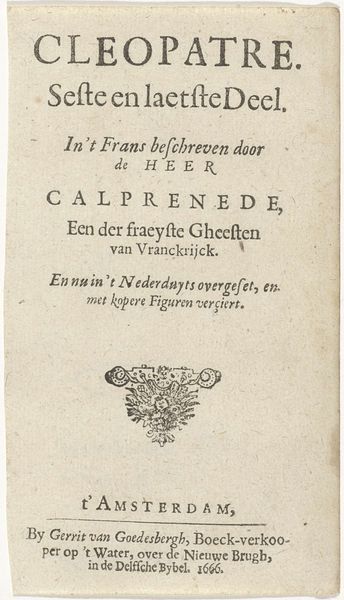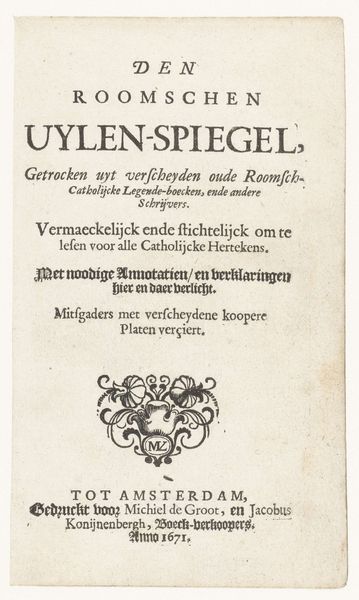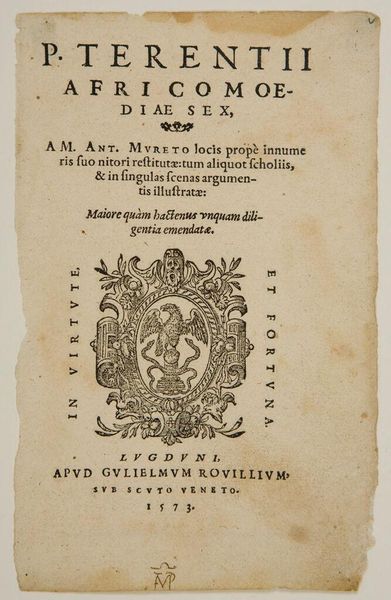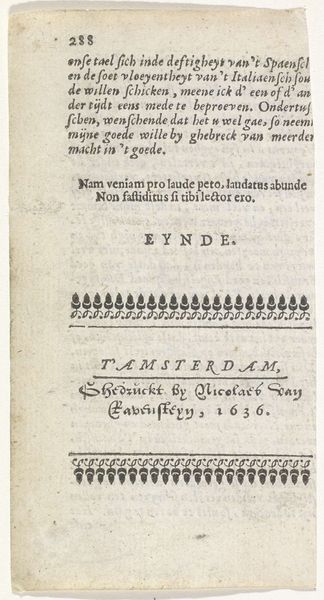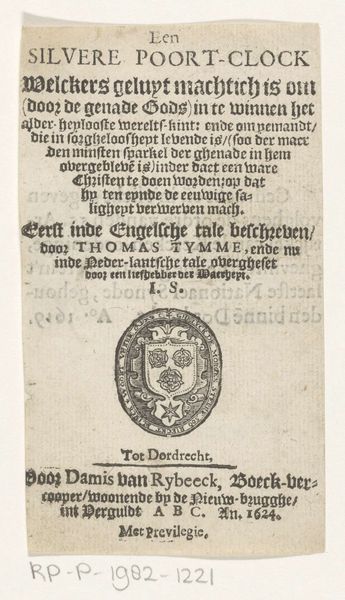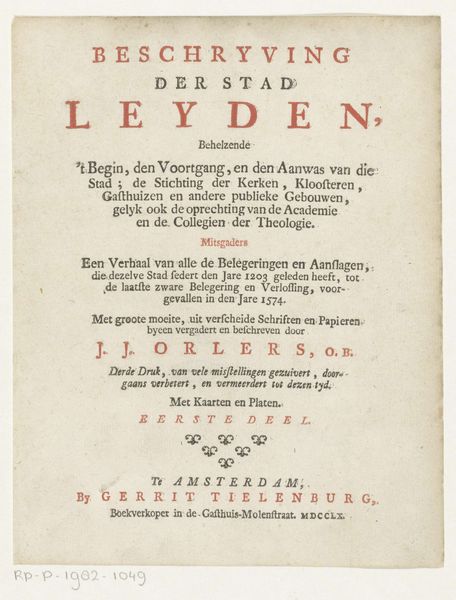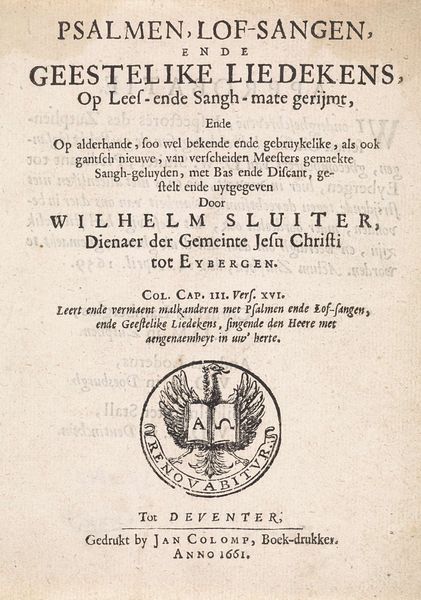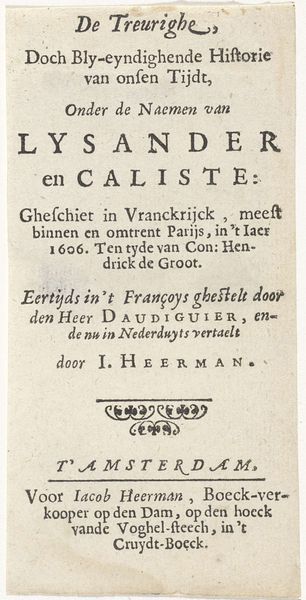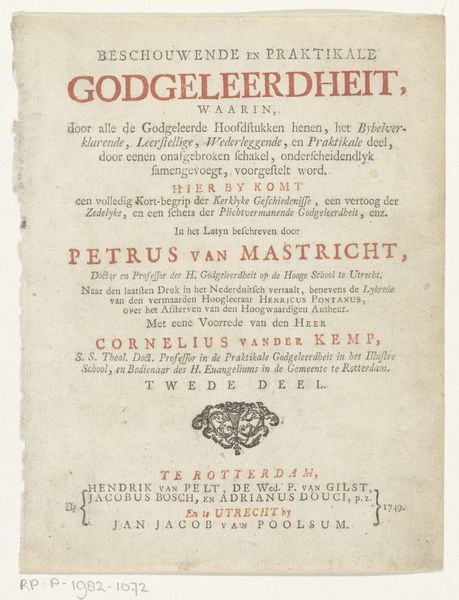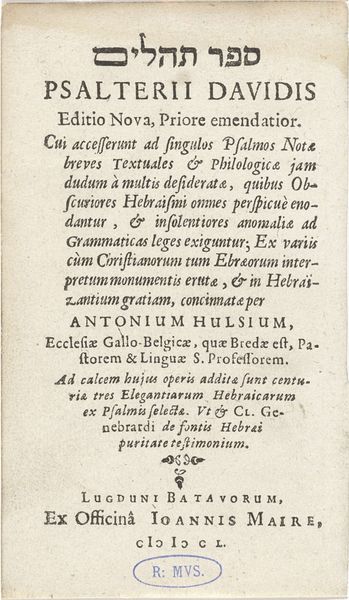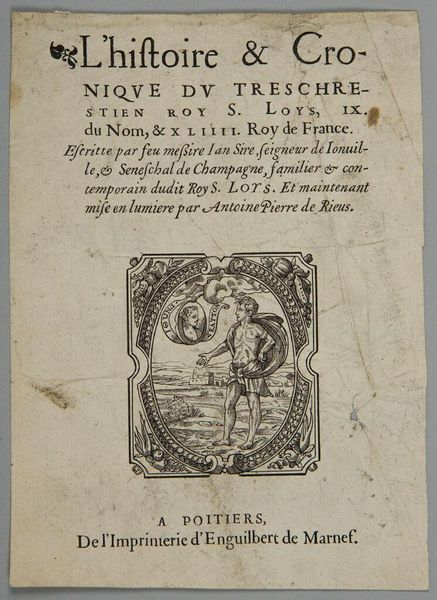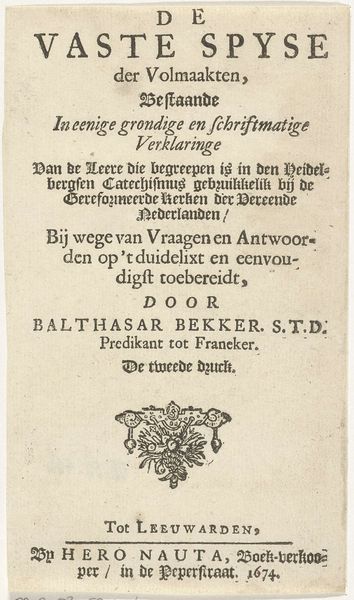
print, textile, engraving
#
hand-lettering
# print
#
old engraving style
#
hand drawn type
#
hand lettering
#
textile
#
personal sketchbook
#
hand-drawn typeface
#
pen work
#
sketchbook drawing
#
handwritten font
#
engraving
#
small lettering
Dimensions: height 130 mm, width 71 mm
Copyright: Rijks Museum: Open Domain
Curator: Immediately I’m struck by the intimacy of this 1667 engraving; its fragility contrasts the bold declarations of the title, Cleopatra. Editor: Precisely. What we have here is a Tekstblad met een floraal motief, a text page employing the print medium. Observe the way the material’s properties—the texture of the paper, the fineness of the engraving lines—create a tangible connection to the historical moment of its production. Curator: Absolutely. It is clearly meant to be a kind of advertisement. The focus seems to be less about Cleopatra herself than it is about praising its French author, sieur de la Calprenède and mentioning its translation. It mentions in handwritten letters something about no illustrations. So, there are complex levels of marketing involved in such printed pieces, targeting different demographics through accessible literature, while simultaneously promoting artistic craftsmanship and literary quality. It speaks volumes about early capitalist culture. Editor: I find it striking how gender plays a role, though implicitly, at this early stage of mass production. The decision to depict Cleopatra, a historical female ruler of shrewd diplomatic and military intelligence is hardly an arbitrary decision. Moreover, the claim "Een der fraeyſte Gheeften van Vranckrijck"— one of the finest spirits from France — frames literary endeavors as elite artistry that can attract various kinds of elite and popular consumption, creating its own sense of worth. Curator: True. By connecting French artistic achievement with a recognizable historical queen known for intellect, wit, diplomacy and cunning is quite telling of cultural tastes in that historical moment. These connections, in my view, would contribute a lot toward what makes high art versus popular craft from this era. Editor: The location marker "in de Delffsche Bybel" places its cultural creation at the nexus of religion and expanding consumer economies. Such interplay can demonstrate how institutions leverage both spirituality and profit generation strategies. Curator: What intrigues me most is deciphering what sort of consumer landscape nurtured the creation and broad reception of a printed material artifact just like this back then. Editor: Indeed, tracing how Cleopatra comes alive and makes history while embedded amongst commercial networks highlights material forces intertwining culture during an interesting turning-point for capitalism, printmaking methods along global power shifts and narratives constructed even today.
Comments
No comments
Be the first to comment and join the conversation on the ultimate creative platform.
